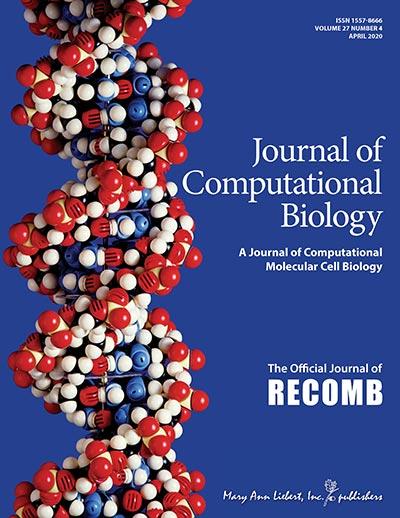
Credit: Mary Ann Liebert, Inc., publishers
New Rochelle, NY, April 8, 2020–A novel method to predict the most promising targets for antiviral drugs or vaccines is based on the conformational changes viral glycoproteins go through during the process of recognition and binding to the host cell. This prediction method, which targets backbone hydrogen bonds for motifs with the highest free energy, is published in Journal of Computational Biology, a peer-reviewed publication from Mary Ann Liebert, Inc., publishers. Click here to read the full-text article on the Journal of Computational Biology website.
Robert Penner, the René Thom Chair of Mathematical Biology at the Institut des Hautes Études Scientifiques (Bures-sur-Yvette, France) and University of California at Los Angeles, is the author of the article entitled “Backbone Free Energy Estimator Applied to Viral Glycoproteins.”
During viral entry and absorption into a host cell, the virus typically undergoes dramatic reconformation to form fusion/penetration motifs. Penner presents a general method to predict the residues of high conformational activity from the three-dimensional structure of viral glycoproteins. The method involves analyzing the hydrogen bonds of a protein and computing the free energy differences of corresponding features to identify regions where conformational change is most likely. The methods presented in the paper are currently being implemented for the spike glycoprotein of SARS CoV-2, the virus that causes COVID-19.
“It is nothing short of miraculous for a mathematical idea to directly lead to a practical implication, but the pay-off can be enormous, as it happened to the Maxwell’s theory of electromagnetic fields — this brought radio and television — and with Turing’s and von Neumann’s ideas on the theory of computation which opened the portal to our digital world,” says Misha Gromov of Institut des Hautes Études Scientifiques (Bures-sur-Yvette, France) and New York University, renowned mathematician and Abel Prize winner (a.k.a. Nobel Prize for mathematics). “Such an idea may have a chance to work, only when its author, besides being a brilliant mathematician, has a broad scientific vision, which is rare among even the best mathematicians of our time. Robert Penner is this kind of a rare mathematician, and his method of detection of patterns in the protein structures, a fruit of purely mathematical thinking, is different from everybody else’s in the world. There is a positive chance this method will work and accelerate the development of antiviral drugs or vaccines. Only an experiment can tell if this is so.”
###
About the Journal
Journal of Computational Biology is the leading peer-reviewed journal in computational biology and bioinformatics, publishing in-depth statistical, mathematical, and computational analysis of methods, as well as their practical impact. Published online only with open access options, this is an essential journal for scientists and students who want to keep abreast of developments in bioinformatics. Complete tables of content and a sample issue may be viewed on the Journal of Computational Biology website.
About the Publisher
Mary Ann Liebert, Inc., publishers is a privately held, fully integrated media company known for establishing authoritative peer-reviewed journals in many promising areas of science and biomedical research, including ASSAY and Drug Development Technologies, DNA and Cell Biology, and OMICS: A Journal of Integrative Biology. Its biotechnology trade magazine, GEN (Genetic Engineering & Biotechnology News), was the first in its field and is today the industry’s most widely read publication worldwide. A complete list of the firm’s more than 90 journals, books, and newsmagazines is available on the Mary Ann Liebert, Inc., publishers website.
Media Contact
Kathryn Ryan
[email protected]
Related Journal Article
http://dx.




